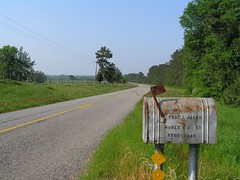The best channel to communicate with customers is … the one the customer chooses.
OK, you can stop reading right there, if you’ll take that sentence to heart. But for this installment of the Small Biz 100, I’m going to tell you a true story, as well as how to do this right.
My husband emailed five or six product questions to a small business. The email reply was this, and this is the entire reply:
Please call [phone number] and I will be able to answer your questions.
Ouch! You can bet your customer had a good reason for picking this particular method to reach you, and you just stomped all over it.
- If Joe wanted to call, he would have called. Why ignore the customer’s preference?
- If the customer is deaf or hard of hearing, why turn this into an issue?
- If the customer has trouble speaking, why make it harder for them?
In this case, the customer would simply prefer to email, rather than call. But now he’s looking for a different place to buy.
How do you make sure that you are using the right channels for your customers?
1. Offer many communication methods
 Offer people as many ways to communicate with you as you can.
Offer people as many ways to communicate with you as you can.
- Text message
- Online form
- Blog comments
- Telephone
- Skype
- Fax
- Flickr
- SecondLife
- Voice and video message widgets
- You can add other tools in the comments, since you’ll remember ones I missed.
Of course, not every business needs all of these. My liquor store uses phone, email, blog comments, Facebook, and mail. I’ll add new tools as it seems reasonable and discard those that don’t help customers reach us. You may use more, or less. Let us know in the comments.
Try to list as many of your open channels as possible on your website, printed materials, social network profiles, etc. Make it easy for people to quickly find the tool they prefer to talk to you.
2. Set notifications to come via your preferred channel
Almost all social networks allow you to choose from different notification methods, including text message, email, or RSS. So rather than bounce all over checking messages at each different network all day, set up the system to come to you.
3. Respond in the same channel as the customer
This is the key. Answer customers in the same way as they reach out to you. If Facebook sent you a text because a customer sent a message, go back to Facebook to answer.
Don’t tell callers to check the website. Don’t ask emailers to call in. Don’t require online forms be printed out and mailed or faxed! (No, really, I actually still see this done!)
4. Be considerate if you change methods in mid-conversation
Sometimes, you will be better able to serve the customer if you can switch channels. But do it in two steps:
- Answer as much as you can in the customer’s channel of choice.
- Then ask permission to switch to the better channel by explaining why it helps.
How do you converse with your customers?
Share in the comments.
This article is part of the Small Biz 100, a series of 100 practical hands-on posts for small business people and solo entrepreneurs, whether in a small town, the big city, or in between. If you have questions you’d like us to address in this series, leave a comment or send us an email at becky@smallbizsurvival.com. This is a community project!
Get the whole series by subscribing to Small Biz Survival. New to SmallBizSurvival.com? Take the Guided Tour.
- About the Author
- Latest by this Author
Becky started Small Biz Survival in 2006 to share rural business and community building stories and ideas with other small town business people. She and her husband have a small cattle ranch and are lifelong entrepreneurs. Becky is an international speaker on small business and rural topics.











Makes sense. And it’s easy. You have to wonder why more don’t. Oh well. It’s opportunity for those, like you, who do.
Thanks.
Thank you, Zane. It’s something we all have to continually work to improve. Tom Peters keeps saying that “Easy is Hard, and Hard is Easy.”
These are great tips. Thanks, Becky. We’re using a lot of the methods you mentioned, but are open to incorporating more as trends and customers dictate.
I recently contacted an arm of a major job search website that publishes workplace-related research. I emailed support asking where to find a particular study, and they responded saying to call the main job board number for assistance. That certainly got me looking elsewhere for the same thing.
One thing that saved them, IMO, is that they followed up with me via a short e-mail survey about my experience using support, I mentioned the incident, and I got a phone call from a real person the next day offering more in depth info. So on the follow-up side, they scored an A.
Mark, great example. When we expect customers to do it OUR way, we are failing them.